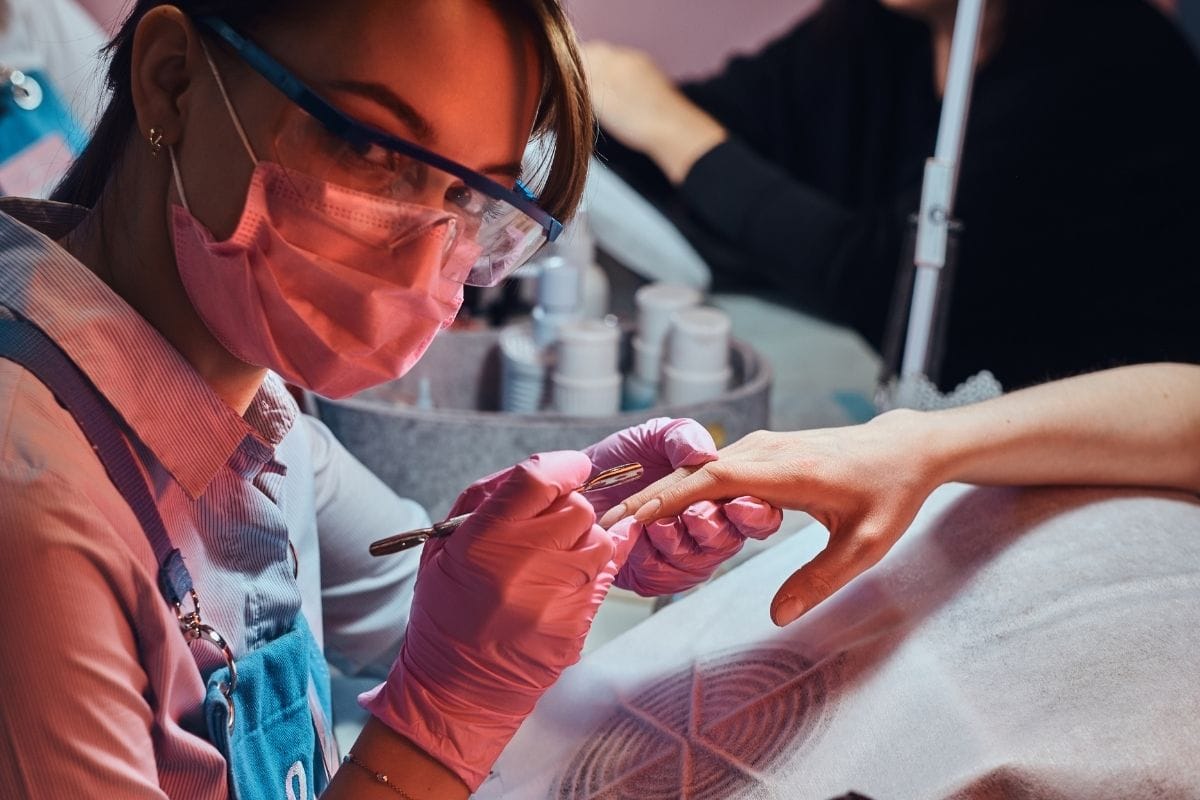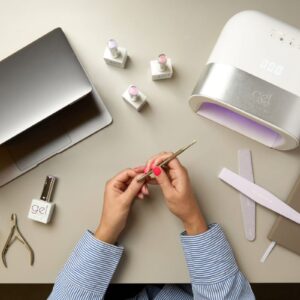
Covid-19 guidance: What you need to do as a nail tech in Step 4
By Chloe Randall | 14 July 2021 | Movers & Shakers, News

Prime Minister, Boris Johnson has confirmed that Step 4 of the roadmap will proceed as planned on Monday 19 July 2021, with updated guidance for close contact services being published.
From Step 4, which resumes on 19 July, local authorities will continue to have the power to place public health restrictions on businesses in cases where a serious and imminent threat to public health is identified.
However, social distancing guidance no longer applies as of 19 July and there are no limits on social contact between people from different households. Covid-19 can still be spread through social contact but you can mitigate this risk and the risk of your salon having to close by reducing the number of people your workers come into contact with.
PPE
If you’re already using PPE in your work activity to protect against non-Covid-19 risks, you should keep doing so. Any use of PPE to prevent Covid-19 transmitting should be determined by a risk assessment in the workplace.
If your risk assessment does show that PPE is required, you must provide this PPE free of charge to workers who need it.
Face coverings
Face coverings are no longer required by law. However, the government expects and recommends that people continue to wear a face covering in crowded, enclosed spaces.
In close contact services, having considered the risk of Covid-19, you may decide that in your premises you’re going to ask clients or staff to wear a face covering, especially where technicians are conducting treatments which require them to be in close proximity to a person’s face, mouth and nose.
The government has set out six priority steps for close contact services to take as the country moves into Step 4:
1. Complete a health & safety risk assessment that includes the risk from COVID-19
Complete a risk assessment, considering the measures set out in this guidance. Also consider reasonable adjustments needed for staff and customers with disabilities. Share it with all your staff. Keep it updated.
2. Provide adequate ventilation
You should make sure there is a supply of fresh air to indoor spaces where there are people present. This can be natural ventilation through opening windows, doors and vents, mechanical ventilation using fans and ducts, or a combination of both. You should identify any poorly ventilated spaces in your premises and take steps to improve fresh air flow in these areas. In some places, a CO2 monitor can help identify if the space is poorly ventilated.
3. Clean more often
It’s especially important to clean surfaces that people touch a lot. You should ask your staff and your customers to use hand sanitiser and to clean their hands frequently.
4. Turn away people with Covid-19 symptoms
Staff members or customers should self-isolate if they or someone in their household has a persistent cough, a high temperature or has lost their sense of taste or smell. They must also self-isolate if they or a close contact has had a positive Covid-19 result, or if they have been told to self-isolate by NHS Test and Trace. If you know that a worker is self-isolating, you must not allow them to come to work. It’s an offence to do this.
5. Enable people to check in at your venue
You’re no longer legally required to collect customer contact details, but doing so will support NHS Test and Trace to contact those who may have been exposed to Covid-19 so that they can book a test. You can enable people to check in to your venue by displaying an NHS QR code poster. You do not have to ask people to check in or turn people away if they refuse. If you choose to display a QR code, you should also have a system in place to record contact details for people who want to check in but do not have the app.
6. Communicate and train
Keep all your workers and clients up-to-date on how you’re using and updating safety measures.
Read the full guidance here

Read the latest issue









